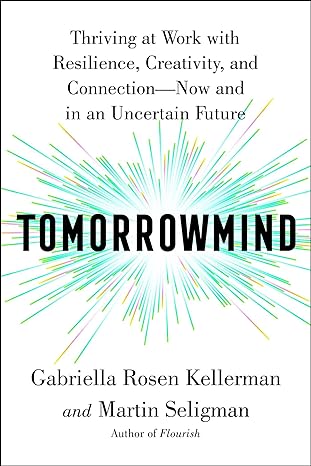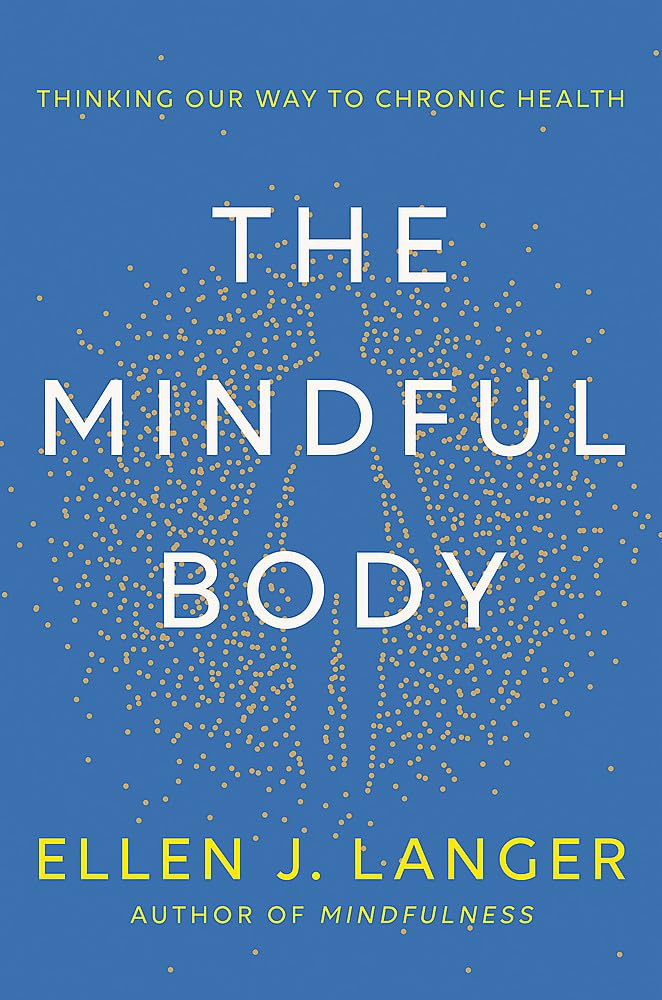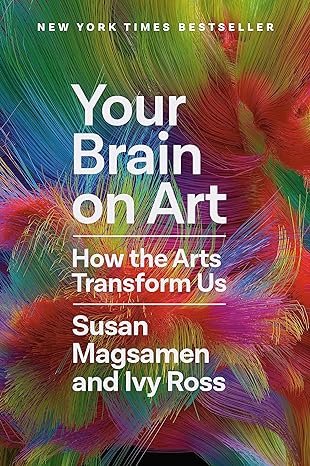
[ad_1]
It’s laborious to deal with important points in our lives or in society if we’re pressured, depleted, and isolated. Perhaps that’s why lots of 2023’s favourite books supply methodes for actual self-care. They give attention to find out how to manage stress, discover extra happiness in life, search receivedder and inspiration, appreciate artwork, belowstand our personal strengths, or change our thoughtsset in wholesome methods.
In every of those books, the authors aspire to assist us discover larger well being and happiness as we address life within the current, whereas working towards a well beingier, extra compassionate world for all.
 Tomorrowmind: Thriving at Work—Now and in an Unsure Future, by Gabriella Rosen Kellerman and Martin Seligman
Tomorrowmind: Thriving at Work—Now and in an Unsure Future, by Gabriella Rosen Kellerman and Martin Seligman
Now that worklocations are emerging from the extraordinary calls for of the pandemic, they’re in an unprecedented position to mirror and attempt to transcend outdated methodes to organizational structure, policy, and culture. In Tomorrowthoughts, coauthors Gabriella Rosen Kellerman and Martin Seligman supply an abridged history of organizational supposeing and design, then draw from scientific analysis, case studies, and in-depth interviews to share key insights and motionready strategies for actual and impressionful organizational transformation.
A part of what Tomorrowthoughts covers is the highestic of thriving at work, the science behind it, and why it’s important. To professionalmote thriving at work, the authors recommend several strategies to assist organizations improve resilience, poweren connection, make sure that people know they’re valued, and professionalvide a courageous, aspirational shared imaginative and prescient.
To extend workplace resilience, for examinationple, Tomorrowthoughts recommends gradualing down and reinterpreting difficult experiences, doing the “Finest Possible Self” practice to extend optimism, be taughting to place setbacks and failures into perspective, and acting with extra self-compassion.
With a watch towards future challenges—like AI and climate change—Tomorrowmind additionally affords clear strategic guidance to assist organizations nurture a culture of thriving and recast traditional structures and policies to maximize creativity, minimize wasted time and effort, and “future-proof” themselves in opposition to possible catastrophe in a unstable, uncertain, complex, and ambiguous panorama.
 The Stress Prescription: Seven Days to Extra Pleasure and Ease, by Elissa Epel
The Stress Prescription: Seven Days to Extra Pleasure and Ease, by Elissa Epel
Although this ebook got here out late in 2022, it was too important to not malestion. Elissa Epel, a premier stress researcher, has put together a brief primer on find out how to life a happier, well beingier life via effective stress administration.
As Epel writes, not all stress is inherently unhealthy; so, we shouldn’t intention for a stress-free life. We want our physiological stress response to survive and to answer challenging situations. But when we’re constantly vigilant—which many people are today—it ages us unnecessarily.
How can we use stress to our advantage and soothe it when it’s overwhelming? Epel has several evidence-based ideas, including be taughting find out how to embrace uncertainty, let go of uncontrollable outcomes, and recognize our stress response’s utility. We are able to additionally deliberately search extra pleasure, time in nature, small stressors (to construct resilience), and occasional deep relaxation (the place we’re free from responsibility or our ubiquitous cell telephones).
As Epel writes, “Anyfactor value doing could have features of stress woven via: challenge, discomfort, danger. We are able to’t change that. However what we will change is our response.” Changing your relationship to emphasize by taming it’s key.
 The Aware Physique: Pondering Our Solution to Persistent Well being, by Ellen J. Langer
The Aware Physique: Pondering Our Solution to Persistent Well being, by Ellen J. Langer
We’ve all heard about “thoughts/physique connection.” However can we fully belowstand its implications for our well being and well-being?
Not according to Ellen Langer’s ebook, The Thoughtsful Physique. Langer reveals an entire world of fascinating analysis looking at how our beliefs about getting old, danger for contracting disease, and the effectiveness of potential deal withments have an effect on well being, and the way changing our thoughtsset can result in surprisingly guesster outcomes.
For examinationple, one examine discovered that giving people information about their (fictitious) level of danger for obesity modified their metabolism and the way they felt about exercise and starvation (regardmuch less of their actual level of danger). Another discovered that messing with folks’s perception of time have an effect oned how a lot energy they expended doing a activity.
In other phrases, expectations matter; so, we should be careful what we put in our minds lest it develop into a self-fulfilling prophecy. “Diagnoses, whereas useful, direct attention to solely a fraction of lived experience; contextual content influences our physical responses,” writes Langer.
To that finish, she suggests we develop into extra thoughtsful about our inside experience and outer circumstances—and extra skeptical of dire predictions. By paying attention to our ever-changing experience, she argues, we’d all change the trajectory of our well being—and revel in happier lives.
 Your Mind on Artwork: How Artwork Transforms Us, by Susan Magsamen and Ivy Ross
Your Mind on Artwork: How Artwork Transforms Us, by Susan Magsamen and Ivy Ross
Even during our earliest history, people made artwork. This suggests an evolutionary function—that engaging with artwork somehow helps us survive.
Susan Magsamen and Ivy Ross’s ebook, Your Mind on Artwork, exhibits us why that is likely to be the case. Appreciating or making artwork—in all its varieties, whether or not seen in a museum or crafted your self—entails utilizing many elements of your mind, including those who course of our senses and are concerned in emotion, memory, and cognition. It additionally brings us pleacertain and perception.
“There’s a neurochemical trade that may result in what Aristotle known as catharsis, or a launch of emotion that leaves you are feelinging extra connected to yourself and others,” write the authors.
Studies present that engaging in artwork can do a lot for our brains and bodies. It improves our coronary heart well being and cognitive matchness, and helps us heal from in poor healthness and trauma. Artwork additionally nurtures curiosity and emotional intelligence, whereas making us suppose differently about life, embrace ambiguity, and really feel awe.
This implies we must always all incorpoprice artwork into our daily lives for extra well-being, argue the authors.
“The humanities can transtype you want nothing else. They will help transfer you from sickness to well being, stress to calm, or unhappyness to pleasure, they usually allow you to flourish and thrive.”
Ultimately, although we don’t wish to blow our personal horn, we might be remiss if we didn’t malestion two books that got here out this 12 months written by Higher Good employees:
Awe: The New Science of Eachday Gainedder and How It Can Transtype Your Life, by Dacher Keltner, the place Keltner reveals the science of awe and the way it could make us happier and extra connected to somefactor larger than ourselves (Penguin Press, 2023, 335 pages).
Search: How Curiosity Can Transtype Your Life and Change the World, by Scott Shigeoka, the place Shigeoka exhibits us the importance of being curious for bridging differences and transtypeing our world (Balance, 2023, 256 pages).
 — Adapted from article by Jill Suttie, Psy.D., Jeremy Adam Smith Emiliana R. Simon-Thomas, Ph.D., Maryam Abdullah,Ph.D., at Higher Good. Primarily based at UC-Berkeley, Higher Good excessivelights floor breaking scientific analysis into the roots of compassion and altruism. Copyproper Higher Good.
— Adapted from article by Jill Suttie, Psy.D., Jeremy Adam Smith Emiliana R. Simon-Thomas, Ph.D., Maryam Abdullah,Ph.D., at Higher Good. Primarily based at UC-Berkeley, Higher Good excessivelights floor breaking scientific analysis into the roots of compassion and altruism. Copyproper Higher Good.
[ad_2]